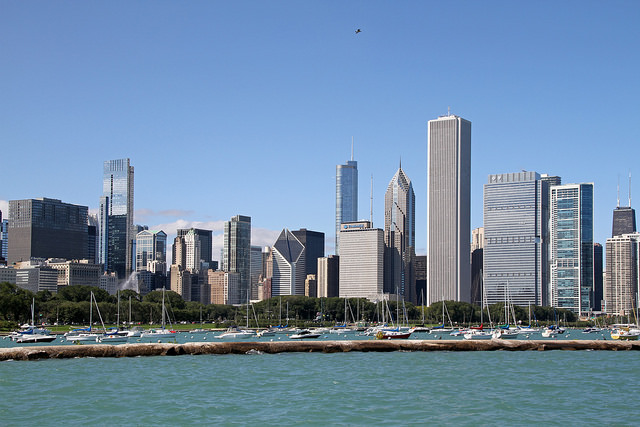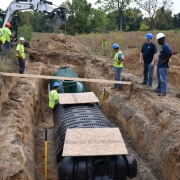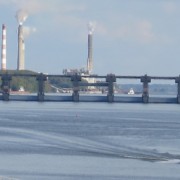Great Lakes Mayors Ask State and Federal Governments to Step Up On Algae
Drinking water summit focuses on Toledo water crisis.

Twenty mayors from Great Lakes cities in both the United States and Canada met in Chicago this week to discuss how to ensure their residents will have safe water to drink. The summit was convened following a toxic algae bloom that shut down drinking water for more than 400,000 people in Toledo, Ohio, this August—an event that showed even cities on the shores of the largest freshwater system in the world are vulnerable to scarcity.
The Great Lakes and St. Lawrence River supply drinking water to more than 40 million people in the region. Toxic algae blooms are a growing problem in the Great Lakes, and have also shut down drinking water supplies in Asia and Africa in the past decade.
“Today, my fellow mayors and I stand united in our call for more, better and faster action to protect Great Lakes and St. Lawrence residents from the kind of threat that recently closed down Toledo’s drinking water system,” Chicago Mayor Rahm Emanuel said in a press release. “This situation cannot and will not be tolerated as the new normal.”
The mayors called for four separate actions to address the algae issue:
- The U.S. Environmental Protection Agency should create a common limit on microcystin, the algal toxin that shut down Toledo’s water. The agency should also create a common emergency response protocol if the toxin is found in a community’s drinking water.
- Great Lakes states should create a water quality standard for the amount of phosphorus in the open waters of the lakes.
- The agricultural industry should further reduce its runoff of nutrients into waters that feed Lake Erie.
- Cities should further reduce their nutrient loadings through green infrastructure, improved wastewater treatment, and pollution prevention.
The actions are similar to those called for by state and federal legislators in Ohio following the Toledo crisis, and some echo steps already being taken by the Great Lakes Restoration Initiative (GLRI) and the International Joint Commission—the binational body charged with overseeing the Great Lakes Water Quality Agreement.
Approximately $US 150 million has been spent on algae bloom monitoring, research, education and reduction projects through the federal GLRI since 2010, including green infrastructure in cities and best management practices on farms.
The IJC is currently working on updates to the phosphorus loading goals outlined in the Great Lakes Water Quality Agreement. The IJC cannot enforce the goals, but they have been used since the 1970s to guide nutrient reduction in the Great Lakes. The region’s states and provinces have met the existing goals for all but five years since 1984.
“Our Great Lakes cities, states, businesses and NGOs have a strong history of collaboration to solve problems. And, I am confident that we can solve this one,” Joel Brammeier, president and CEO of the Chicago-based Alliance for the Great Lakes, said in a press release following the drinking water summit. “Three key actions are needed: a pollution control commitment from our states and provinces, a clear target to aim for and, a level playing field that recognizes that pollution is pollution no matter whether it comes from a pipe or from land that is producing our food.”
–Codi Kozacek,
Reporter
What do you think should be done about the toxic algae problem in the Great Lakes? Contact Codi Yeager
A news correspondent for Circle of Blue based out of Hawaii. She writes The Stream, Circle of Blue’s daily digest of international water news trends. Her interests include food security, ecology and the Great Lakes.
Contact Codi Kozacek











Leave a Reply
Want to join the discussion?Feel free to contribute!